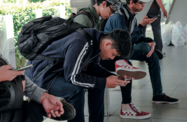State investment in infrastructure and high consumer spending forecasts are set to drive growth in Indonesia’s ICT sector.

Data management
In late February Rudiantara, minister of communication and information technology, announced that Indonesia’s Palapa Ring project is on track to provide the entire country with internet access by 2019.
As the government’s cornerstone ICT infrastructure project, the Palapa Ring is a fibre-optic network that will comprise 35,000 km of undersea cable, providing high-speed broadband connectivity across the country.
The project will also improve connection speeds, allowing for download times of close to 20 Mbps in urban areas – up from 7 Mbps currently – and 1 Mbps in rural districts.
Scheduled to be operational by the end of 2018, with 400 of the 514 regencies already connected, the Palapa Ring is part of the broader Indonesia Broadband Plan (IBP) 2014-19 – a programme of infrastructure investments supporting the government’s vision of elevating Indonesia’s regional ICT presence.
Investment across the term of the IBP are set to total $23.2bn, with budgetary allocations contributing to 10% of this figure. This year alone, the government has said it will spend $1.5bn on boosting connectivity in districts not yet served by broadband.
The roll out of the IBP should also have a direct impact on the Indonesian economy, according to estimates by the Ministry of Communication and Information Technology (MCIT). Rosarita Niken Widiastuti, director general of information and public communications at the MCIT, told a meeting for the Confederation of ASEAN Journalists in January that every 10% increase in broadband penetration could boost GDP growth by around 1.3% a year.
Broader linkages
International connectivity is also being strengthened, with Australia’s Trident Subsea Cable announcing at the end of last year that it had signed an agreement with Indonesian submarine cable company Triasmitra to own and operate a two-pair submarine and terrestrial cable system connecting Jakarta with Singapore and the rest of mainland Asia.
The 1000-km link, the first part of a larger project that will connect to the west coast of Australia, is expected to be ready for service in the second quarter of this year.
Growth in demand as sales jump forecast
Demand for high-speed broadband is being driven by growth in both internet subscriptions and mobile handset sales.
Active internet users increased by roughly 51% year-on-year (y-o-y) to 133m in January 2017, according to UK-based digital media agency We Are Social, representing an overall penetration rate of more than 50%.
Meanwhile, mobile broadband penetration stood at 65%, with Indonesians spending just under four hours a day on average accessing the internet via mobile phone, putting the country in third position globally behind Brazil and Thailand. A 40% y-o-y jump in active social media users was also recorded, reaching 106m people.
With access to high-speed broadband services improving, the Indonesian arm of US-based research firm International Data Corporation (IDC) expects significant growth in consumer and business spending on ICT over the next three years.
In a press release issued in mid-January, the company forecasts Indonesia’s ICT spending will increase by 16% to Rp394trn ($29.5bn) through to 2020, up from an estimated Rp339trn ($25.4bn) this year.
In terms of IT expenditure alone over the same period, IDC expects a 24.2% increase in sales to Rp159trn ($11.9bn).
Until now the Indonesian IT market has largely been driven by device sales, with private consumers rather the businesses making up a larger proportion of spending, at around 57% of outlays compared to roughly 43%. However, IDC expects a shift in this trend as Indonesia’s business community increases its adoption of new technology.
“So far, devices are still the biggest contributor to Indonesia’s IT spending,” Mevira Munindra, consulting research manager of IDC Indonesia told international media in January. “However, we are seeing more and more companies in Indonesia embracing emerging technologies, such as cloud, analytics, managed services, data centre management, that are provided by tech vendors.”
The retail, financial services and manufacturing sectors will be the strongest markets for IT hardware and services, Mevira said, noting that spending on IT services will increase by 61.1% to Rp29trn ($2.2bn) by 2020, up from the Rp18trn ($1.3bn) forecast for this year.
This sustained demand across the spectrum could create opportunities for technology and services providers, both at the direct sales level and in terms of longer-term support and upgrades of previously purchased IT.


